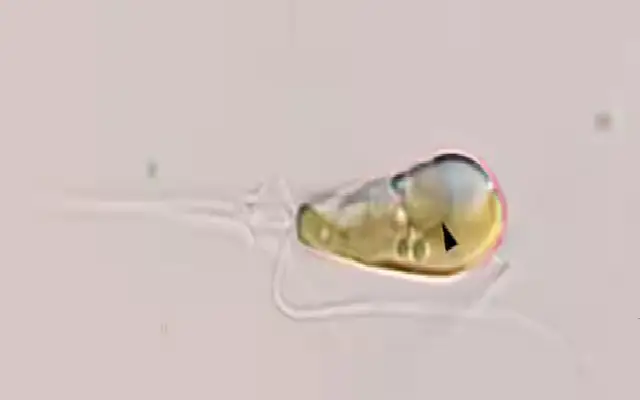
Any talk of Kodagu often begins with the aromatic coffee from this beautiful hilly district of Karnataka. While many may also associate oranges and some lip-smacking authentic Kodava delicacies to this place, not many know that this very district was once known for its distinct, rich honey. But the honey has lost its sweetness in recent times.
At the outset, though it may seem that the apiaries of Kodagu are reviving themselves with the generous help of the apiculturists and the state government, the fact is that a large quantity of honey is sourced from various places across the country, which isthen labelled and sold as Kodagu honey. This is unfortunate, for once Kodagu honey was very famous for its quality, purity and availability. Recently however the bees have been stopped in their tracks by disease and ants.
When colonies stood abandoned
The downfall of the flourishing apiculture started in the 1990s when Thai Sac Brood disease hit the industry in such a way that apiculture in Kodagu could regenerate its former glory. Said to have originated in Thailand, the disease kills bees, including the queen bee and so far there has been no effective remedy found or any traction in that direction.
As the buzzing bees turned silent, government schemes were slowly withdrawn and with time, beekeeping centres, specifically the government-run ones turned into decrepit buildings. The devastating result was such that the district that once produced thousands of tonnes of honey witnessed dip in production by 50 per cent!
Speaking to Karnataka Today, Gurudutt Shanker, for whom bee-keeping has been a hobby for several decades now says that in the mid 90s bees from Thailand were introduced to the Western Ghats and since there may have been possibilities of infected bees having brought here, Kodagu could not stand the onslaught when the disease started killing the Indian variety of bee-Apis Cerena Indica.
The deadly disease first surfaced at a place called Aranthodu near Sullia way back in 1991 and it lay siege to the entire Kodagu district and pockets of Dakshina Kannada with the worst ever episode of destruction showing up in 2006.
For 65-year-old B T Puppaiah from Haraga under Pushpagiri region, life was a ‘sweet’ concoction of coffee and honey till 1991. As a small scale bee-keeper, he had 65 honey rearing boxes that easily produced 180 to 200 kgs of honey annually, comfortably supplementing his income. But, then the carnage began. “By 2001, everything had changed and my produce came down to 15 to 20 kg honey annually. We are slowly recovering lost ground again and now I produce about 150 kgs per year,” he says.
When the bee keepers felt that the dark clouds of difficulties were drifting away, a new challenge cropped up over the last five or six years in the form of the red ant menace. The bee keepers in Shanthalli region, which alone has over 500 apiculturists is the worst hit.
B N Ningappa, a bee keeper from Shanthalli said that he was shocked to see red ants eat away not just the honey but also the honey combs!”Due to the ant menace, the bees would fly out of the boxes and would never return. However, the bee keepers started applying engine oil on the box frames, which helped them keep red ants at bay,” he says.
The distinct sweetener
The demand for Coorg honey has always been great and if not for the disaster there would have been no looking back for Coorg honey. With people growing conscious about their health and healthy habits, especially recognizing the goodness of honey, the growth prospects for honey can only be bright, says Gurudutt, who feels that though it is not possible to explain in a word as to what is so distinct about Kodagu honey, he says that the quality of flowers available in and around the district are such that the district produces superior quality honey.
“The bee keepers prefer southern Kodagu for bee keeping because it is favourable there. The quality, texture, colour and taste of honey depends on the season, flowers and various other factors. However, the belief is that the honey from Jamun trees (jambola) are the best,” he says adding that though no one would spell it out in open, huge quantity of honey is pumped into Kodagu from various parts of the country to keep the ‘mirage’ of Kodagu honey alive and hence what tourists buy from stalls may not necessarily be the Kodagu Honey!
Supporting this movement to revive honey production in Kodagu, are two very strong co-operative societies running in Bhagamandala and Virajpet. They seem to be the silver lining in the lives of the bee keepers. These societies collect the honey from the beekeepers in Kodagu and process them and clear them with the Agmark certification. They market them under the brand name Coorg Honey. The society sells the honey at Rs 280 per kg. Some Bee Keepers however dispute this claim and allege that at least some of the honey sold under the brand Coorg Honey is not originally from the district.
Honey is being produced mainly in Bhagamandala, Galibeedu and Cherangala of Madikeri taluk, Birunani, T Shettigeri and Kedamullur in Virajpet taluk, Shanthalli, Jakkanalli and Surlabbi in Somwarpet taluk. At present, the district has 6852 bee keepers with production of 850 tonnes. The last year’s production recorded 499.5 tonnes. Bhagamandala region alone accounts more than 50 percent of production of district. During 1990, honey production was at its peak in the district with 1500 tonnes. By 2006 however, the production had slipped to a precarious 500 Tonnes.
Efforts from Government
Speaking to Karnataka Today, District Apiculture Officer D T Vasanth said that government has been doing what it takes to revive the business, but there is no denial that lots more needs to be done.Government has been providing boxes to the bee keepers at a subsidized rate in a bid to revive apiculture.The only apiculture technical training center of state is operating in Bhagamandala. The State government has sanctioned a honey park, which is being constructed at an estimated cost of Rs 85 lakhs. The park would also house a honey museum.
However, the bee keepers say that the government has to bring in more systematised packages that could not just sustain existing bee keepers, but also motivate more and more individuals to take up apiculture, for the gap between production of honey and the demand for the same is huge.”Apiculture must be funded well. Recently, the GST came as a massive blow as five per cent GST was imposed on branded honey. It is not possible to thrive in such a condition,” said an apiculturist under conditions of anonymity. Technology too is an important part of the revival. India has to match the west in its practices if it is step up production, but this may take a long time.
Branding is a boon
Some apiculturists, who could think ‘out of the box’ have ventured into selling their produce as brands.’Coorg Gold Honey’ and Brand ‘Ainmane’ have been creating a buzz in the market, says Chithra Nanjappa, a resident of Madikeri and a school teacher by profession. Both of these brands stand testimony to the perseverance and dedication of the men who made it.
Medappa, the maker of ‘Coorg Gold Honey’ beams with his boxes of busy bees doing their work in the background. He has 600 boxes of bees and has a bee-keeping training centre as well because, after having realised the potential of apiculture himself, he wants to give back something worthwhile to society.
“Farming and apiculture go hand in hand. With flowers around, we get the best honey and the bees carry on pollination, which ensures great yield. It is a double delight for a farmer,” says Medappa, who feels that bee-keeping must be added to the school curriculum because at present not many people know the technical aspects of this profession.
“In foreign countries we have apiculturists adopting latest techniques, but in India there has been no advancement. We are still using outdated techniques to the extent that bees are caught from the wild and left to breed in boxes. We should be in a position to have bees breeding in boxes, make queen bees, make colonies here,” he says proudly claiming that he releases over one lakh bees into wild every year.
Kudos to these apiculturists who have faced the hurricane and have never left it shake their grit.
Ainmane- Pots of Goodness
Ainmane brand of honey is one of the most sought after products. Ainmane, the words means ‘ancestral home’, but what brand Ainmane is doing is more of conservation of an age old technique of bee keeping, which may be lost in the sands of time soon.
Ainmane markets something called a ‘pot honey’ and it is believed to be the best form of honey for the simple reason that bee rearing itself happens in an earthen pot. The technique of bee keeping in a pot is a knowledge now known to very few people. In Kodagu there are clusters of villages where people still follow this technique and Ainmane Poovaiah has donned the hat of a conservationist by providing these traditional bee keepers a platform to market their honey and reap better returns.
Suralabbi, Ammiyala, Mutlu, Kumbaragadige and nearby villages are the spots that produce pot honey. Pot bee keeping was the technique that was followed before 1940s but, now bee keeping is done in boxes.
Poovaiah who collects this honey from about 30 to 40 pot bee keepers says that the harvest of honey runs from February to May and the taste of the honey differs every month.
“Throughout the year there is one or the other variety of flower that blooms, feeding the apiaries or to be specific, the pots. We classify our products according to the harvest season and name them accordingly, viz the summer, summer shower, autumn and the like,” he explains adding that summer shower is his personal favourite for the sheer beauty of the making of the honey. “The summer showers implant water droplets into the flower. The bees do not touch these flowers and let the nectar ferment on its own. The nectar then dries up gradually and thickens. This nectar is later taken away by the bees to produce a mild summer shower honey,” he explains.
Ainmane does not use forest/wild honey and Poovaiah has a reason. “The forest honey is tapped after burning down the colony. I do not agree with this and hence I have always made it a point to not market or even purchase forest honey,” he says.
Pot honey is priced on the higher side, but the ones who have tasted this have fallen in love with it. It is also exquisite because it is only about one tonne that a large group of pot honey tappers can make annually.

















